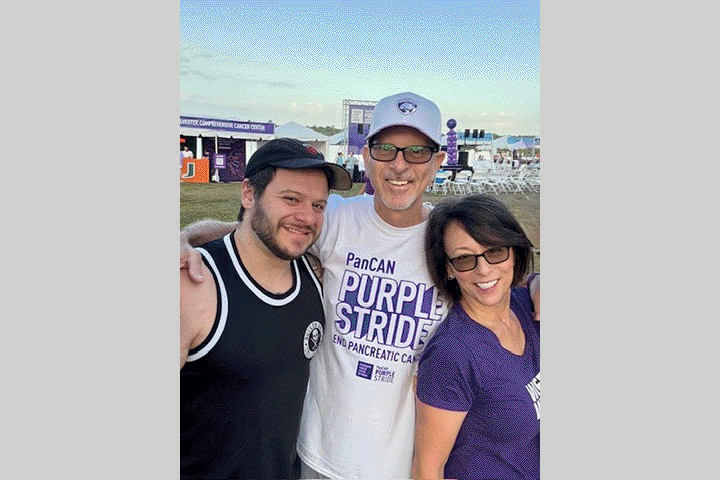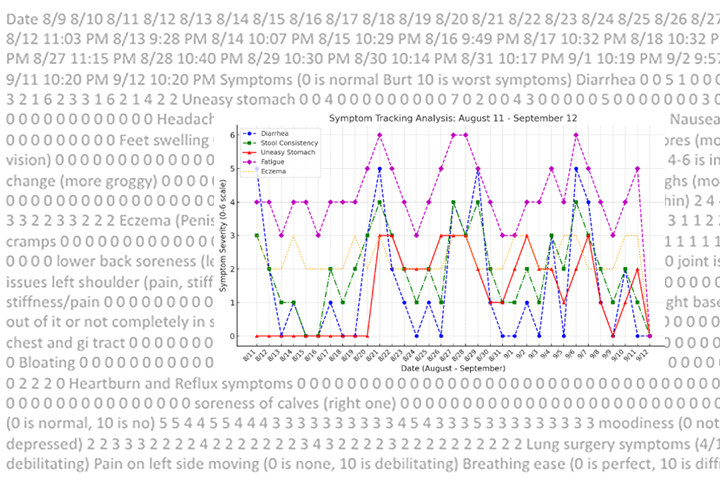Why Clinical Trials Should Be a Patient’s Starting Point

Since June, Let’s Win has been partnering with the Association of Community Cancer Centers for a series of blogs on pancreatic cancer. This was the third blog, published in August.
Clinical trials push the boundaries of science so that better treatments, therapies, vaccines, and interventions will be available to patients in the future.
For many patients with cancer, trials are viewed as a last resort. But with the low survival rate for patients with pancreatic cancer, participating in clinical trials offers an opportunity to receive life-saving treatments today. Instead of viewing them as a last resort, patients with pancreatic cancer and their oncologists should consider clinical trials as a possible treatment option from the very start.
The Earlier, The Better
For most cancers, clinical trials are available to patients whose first, second, and third lines of treatment have been unsuccessful. But for pancreatic cancer, because it is so lethal, clinical trials can—and should—be considered as part of the first line of treatment. Even when a tumor is found at an early stage and surgery is an option, patients should be able to get access to cutting edge treatments right away.
Getting into a clinical trial before treatment begins is also ideal as some trials require washout periods (ie, time for the body to recover from previous treatments). However, there are trials underway for patients in all stages of the disease, and the protocols vary widely. Some include different combinations of approved chemotherapy drugs, chemotherapy before surgery, immunotherapy, treatments to break down the stroma, the use of targeted agents, and trials based on tumor type or genetic profiles.
What Patients Should Know About Clinical Trials
Despite the possibility for better outcomes and the variety of open trials, less than 5% of patients with pancreatic cancer are enrolled. Some patients are too ill to participate, but others are unaware of the benefits or misinformed about how they work. Helping a patient understand these points can give them the knowledge and confidence they need to seek and enroll in a trial. They include:
- Pancreatic cancer clinical trials include the standard of care by default. Contrary to some fears, participating in a pancreatic cancer trial does not mean patients have to sacrifice what is currently considered the best treatment. Think of it as “standard of care plus.” If a participant does not receive the medication being tested, they will still be given the standard of care treatment that already exists for pancreatic cancer.
- Clinical trials have extensive safety measures in place. By the time a trial is enrolling patients, they have undergone extensive pretesting in the lab and have been reviewed stringently by scientific and regulatory boards. These boards continue to monitor the trial as it is underway and can take action as needed. This process not only keeps participants safe, but the heightened attention can advance the treatment and care options along the way.
- Finding a trial and qualifying for it is a straightforward process. Ten years ago the best option for finding a clinical trial was to look on the National Institute of Health’s website, which could be daunting and confusing. Today, a number of online services can help patients narrow down trials by disease stage, location, and other factors. For example, Let’s Win partners with EmergingMed, the leading innovator in clinical trial enrollment services, to provide a customized tool that helps patients find clinical trials elated to their disease.
- Patients need to understand the costs of participating. The treatments given during a clinical trial do not cost extra, but additional travel expenses, testing, and time off from work may be needed. Some trial sponsors cover extra expenses. All this needs to be explained to the patient before they participate.
The Importance of Diversity + Helping Future Patients
Racial disparities in clinical trials are vast; this is problematic. For example, Black Americans comprise 13% of the US population but only 4% of cancer clinical trial participants. The participation numbers for Hispanic patients are equally low. Ultimately, researchers won’t know if a drug works for everyone if it hasn’t been tested by everyone. How do we reach the underrepresented communities and encourage them to participate in clinical trials? The answer is complex and involves multiple disparities, including which patients are offered trials. Therefore, outreach through doctors and trusted partners, reassurance, and communication regarding the safety of trials are all crucial.
The benefits of taking part in a clinical trial extends beyond personal gain. Patients may feel inclined to participate with the understanding that the trial might not help only them, but that it might help other patients in the future. People are living longer and better today because of clinical trials.
Setting Expectations
Transparency is an important step in the clinical trial process. Patients need to understand each consideration when contemplating enrollment in a trial. These include:
- Not everyone will find or qualify for a clinical trial. However, patients can continue looking for other trials as their treatment progresses. The right opportunity may open up at a later date.
- There’s never a guarantee with any treatment that it will be successful, whether it is part of a trial or not. But receiving extra care through cutting-edge monitoring could make a difference.
How Can We Enroll More Patients?
Each of us has a part to play in finding the right clinical trial for today’s patients and creating better treatments for the patients of tomorrow. This can be achieved by:
- Encouraging patients to seek clinical trials from day one. This is important for all patients.
- Suggesting genetic testing and tumor profiling early on. Not only will this give the care team a clearer picture of a patient’s needs, but it could open up the possibility for a clinical trial that targets the tumor’s genetics.
- Saving the biopsy sample in case it is needed for a clinical trial. Some clinical trials require a sample of the tumor. If a biopsy has already been completed by the patient’s surgeon, this will speed up the process and relieve the patient from undergoing another surgical procedure.
Let’s Win Provides a Road Map for Pancreatic Cancer Clinical Trials
Connecting patients with clinical trials is part of Let’s Win’s mission. To support this, Let’s Win has developed educational resources around clinical trials, such as: web resources devoted to clinical trials and how they work, the enrollment process, what is involved in qualifying for a trial, as well as the Let’s Win Trial Finder which helps patients with pancreatic cancer find trials. The platform also houses webinars about clinical trials that feature doctors explaining why participation is so important and patients sharing their experiences taking part in trials. This information can set a patient’s expectations and give them the knowledge they need to move forward. And that’s the best place to start.







